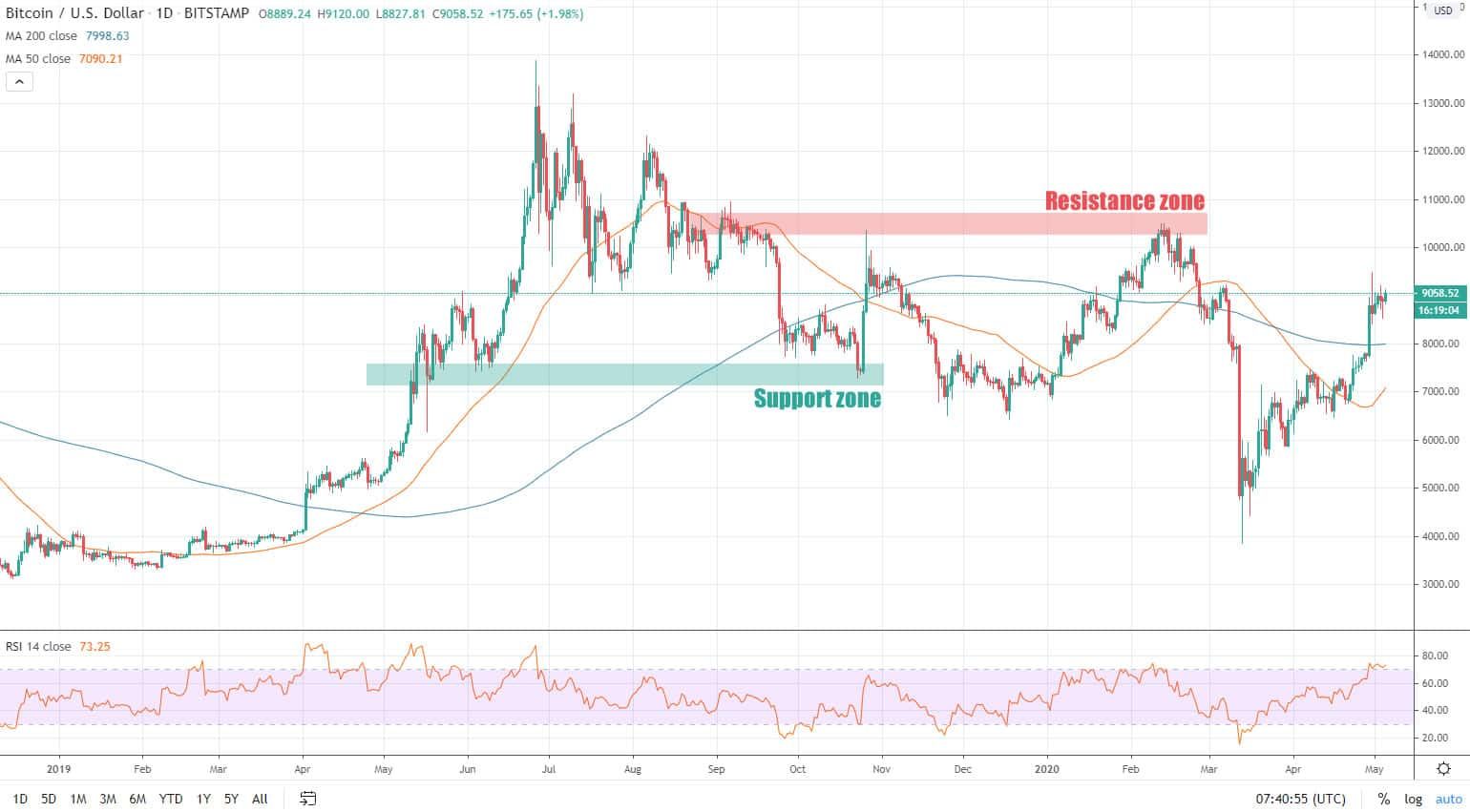How to Interpret Token Price Charts

- Understanding the Basics of Token Price Charts
- Key Factors to Consider When Analyzing Token Price Charts
- Common Patterns and Trends in Token Price Charts
- Using Technical Analysis to Interpret Token Price Charts
- The Impact of Market Sentiment on Token Price Charts
- Strategies for Making Informed Decisions Based on Token Price Charts
Understanding the Basics of Token Price Charts
When it comes to interpreting token price charts, it is essential to understand the basics before delving into more advanced analysis. Token price charts provide valuable information about the historical performance of a token, which can help investors make informed decisions about buying or selling. By analyzing these charts, investors can identify trends, patterns, and potential price movements.
One of the key elements to understand in token price charts is the timeframe. The timeframe refers to the period over which the price data is displayed, such as daily, weekly, monthly, or even intraday. Different timeframes can provide different insights into the token’s price movements, so it is essential to choose the timeframe that best suits your trading strategy.
Another important aspect of token price charts is the price scale. The price scale represents the price levels at which the token is trading and can be displayed in either linear or logarithmic form. A linear scale represents price movements in equal increments, while a logarithmic scale represents price movements in percentage terms. Understanding the price scale can help investors better interpret the magnitude of price movements.
Key Factors to Consider When Analyzing Token Price Charts
When analyzing token price charts, there are several key factors to consider that can help you make informed decisions. One important factor to look at is the overall trend of the token price over time. By examining the historical price movements, you can identify patterns and trends that may indicate future price movements. Additionally, it is essential to consider the trading volume of the token. High trading volume can indicate strong market interest and liquidity, while low trading volume may suggest a lack of interest or potential price manipulation.
Another crucial factor to analyze is market capitalization, which represents the total value of all tokens in circulation. Market capitalization can give you an idea of the token’s overall value and its position in the market relative to other tokens. Additionally, it is essential to consider any upcoming events or news that may impact the token price. Positive news such as partnerships or product launches can drive up the price, while negative news can lead to a price drop.
Furthermore, it is important to pay attention to technical indicators such as moving averages, relative strength index (RSI), and MACD. These indicators can help you identify potential buying or selling opportunities based on historical price data. By combining technical analysis with fundamental analysis, you can gain a more comprehensive understanding of the token price movements and make more informed trading decisions.
In conclusion, analyzing token price charts requires a combination of technical and fundamental analysis. By considering factors such as price trends, trading volume, market capitalization, upcoming events, and technical indicators, you can develop a more accurate understanding of the token’s value and potential price movements. Remember to conduct thorough research and stay informed about the latest developments in the market to make well-informed decisions when trading tokens.
Common Patterns and Trends in Token Price Charts
When analyzing token price charts, it is essential to look for common patterns and trends that can provide valuable insights into the market. By understanding these patterns, investors can make more informed decisions about when to buy or sell tokens.
One common pattern to look for in token price charts is the uptrend, which indicates that the price of the token is increasing over time. This can be a sign of positive market sentiment and may present a buying opportunity for investors looking to capitalize on potential gains.
Conversely, a downtrend in the token price chart signifies that the price is decreasing. This could indicate a bearish market sentiment and may prompt investors to consider selling their tokens to avoid potential losses.
Another important trend to watch for is sideways movement, where the price of the token remains relatively stable over a period of time. This could suggest indecision in the market and may be a signal for investors to exercise caution until a clear trend emerges.
Additionally, support and resistance levels are key indicators to consider when analyzing token price charts. Support levels represent a price point where the token has historically had difficulty falling below, while resistance levels indicate a price point where the token has struggled to rise above. These levels can help investors identify potential entry and exit points for their trades.
Using Technical Analysis to Interpret Token Price Charts
When it comes to interpreting token price charts, technical analysis can be a valuable tool. By analyzing historical price data and volume, traders can identify patterns and trends that may help predict future price movements. Here are some key concepts to keep in mind when using technical analysis:
- Trendlines: Trendlines are used to identify the direction of a token’s price movement. An uptrend is characterized by higher highs and higher lows, while a downtrend has lower highs and lower lows.
- Support and Resistance: Support levels are price points where a token tends to find buying interest, preventing it from falling further. Resistance levels, on the other hand, are where selling interest tends to emerge, capping the token’s price increase.
- Indicators: Technical indicators such as moving averages, Relative Strength Index (RSI), and MACD can provide additional insight into a token’s price movement. These indicators can help traders confirm trends or identify potential reversals.
- Volume: Volume is an important indicator in technical analysis as it can confirm the strength of a price movement. An increase in volume along with a price increase suggests a strong uptrend, while decreasing volume may indicate a weakening trend.
By incorporating these technical analysis tools into your analysis of token price charts, you can gain a better understanding of market dynamics and make more informed trading decisions. Remember that technical analysis is just one tool in a trader’s toolbox and should be used in conjunction with other forms of analysis for a comprehensive view of the market.
The Impact of Market Sentiment on Token Price Charts
Market sentiment plays a crucial role in influencing token price charts. The emotions and attitudes of traders and investors towards a particular token can have a significant impact on its price movements. When market sentiment is positive, investors are more likely to buy tokens, leading to an increase in demand and, consequently, a rise in prices. Conversely, when sentiment is negative, investors may sell off their tokens, causing prices to drop.
It is essential for traders to pay close attention to market sentiment when interpreting token price charts. By analyzing the overall mood of the market, traders can gain valuable insights into potential price movements. For example, if sentiment is overwhelmingly bullish, it may indicate that prices are likely to continue rising. On the other hand, if sentiment is bearish, prices may be poised to fall.
Traders can gauge market sentiment through various indicators, such as social media trends, news articles, and online forums. By monitoring these sources, traders can stay informed about the prevailing sentiment and make more informed trading decisions. Additionally, sentiment analysis tools and sentiment indexes can provide traders with quantitative data on market sentiment, helping them make more data-driven decisions.
Strategies for Making Informed Decisions Based on Token Price Charts
When it comes to interpreting token price charts, it is essential to employ strategies that will help you make informed decisions based on the data presented. By analyzing the price movements and trends displayed on these charts, you can gain valuable insights into the market and make educated choices about your investments.
One strategy to consider is identifying patterns in the price chart that may indicate potential buy or sell opportunities. Look for repeating trends such as support and resistance levels, head and shoulders patterns, or double tops and bottoms. These patterns can help you anticipate price movements and make strategic decisions accordingly.
Another important strategy is to utilize technical indicators in conjunction with the price chart. Indicators such as the Relative Strength Index (RSI), Moving Averages, and Bollinger Bands can provide additional insights into the strength and direction of a token’s price movement. By combining these indicators with chart analysis, you can confirm trends and validate your trading decisions.




